

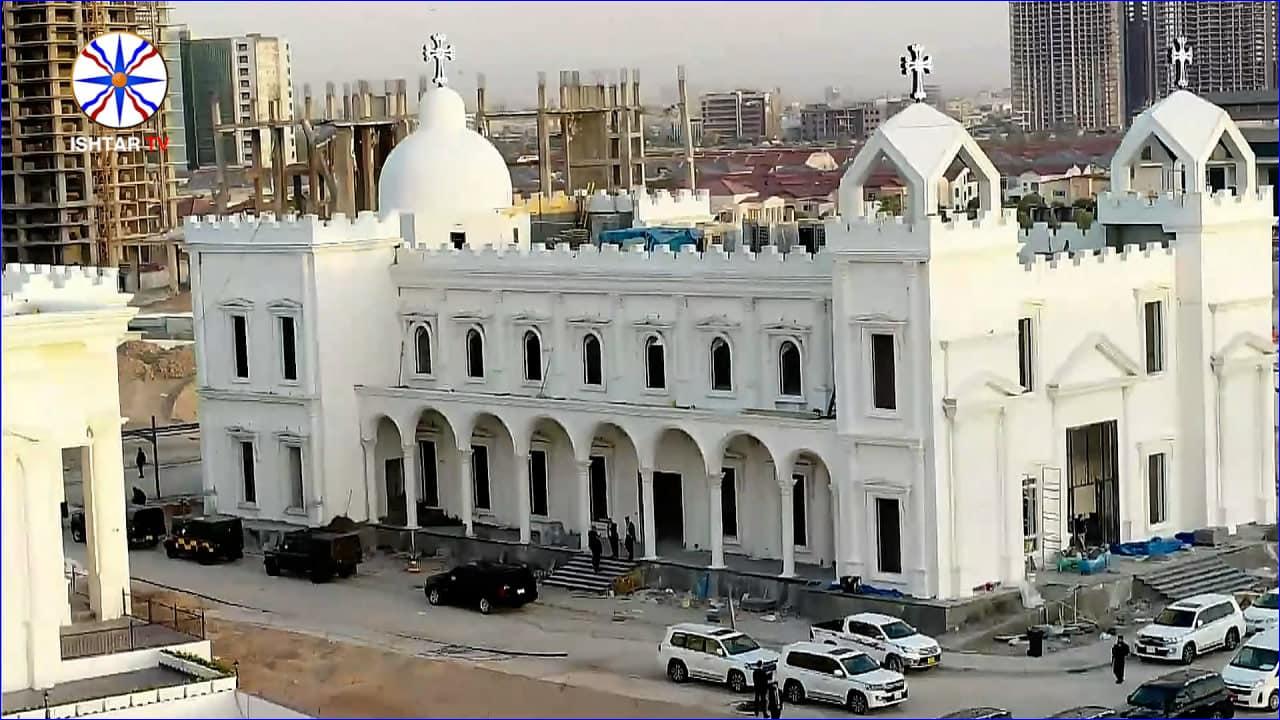
 IshtarTV)
IshtarTV)
According to scholars Patricia Crone and Michael Cook, Assyrians established a unique Church of the East; "on the one hand the local church of Assyria, a chauvinist assertion of a provincial identity; and on the other the metropolitan church of Persia with its center in Babylonia, a cosmopolitan assertion of a gentile truth.1 While the 'church of Assyria' has maintained its tenuous existence through villages and towns that continue to uphold the Christian faith, the more 'cosmopolitan church,' once reputed to be larger than the Catholic and Orthodox churches combined, has over the centuries lost ground throughout Asia due to persecution. The establishment of the patriarchy in Erbil is certainly an assertion of sorts by the Church to counter its decline.
On September 12, 2022, one year after his consecration, Patriarch Awa unveiled the glimmering white patriarchal residence that was 14 years in the making. "Today is a historic day," he stated in a speech in the Assyrian language with an Assyrian flag behind him, giving acknowledgment to the work begun under the late Patriarch Dinkha IV, and the retired Patriarch Gewargis III. Patriarch Awa explained that the apostles established the Church of the East where the patriarchate now stands, and described how the patriarchal seat of the Church had gone from there to Seleucia-Ctesiphon 2, then to Baghdad in 776 AD, then to Erbil in 1301, then to Karmalesh (Kar-Mulisi) in the Nineveh Plain in North Iraq, then to Alqosh for hundreds of years. He lamented the unjustness of the expulsion of the late Patriarch Eshai Shimun XXIII from Iraq in 1933 and rejoiced, saying "this historic seat has returned to its homeland... May this Patriarchate be blessed for all of you and us."
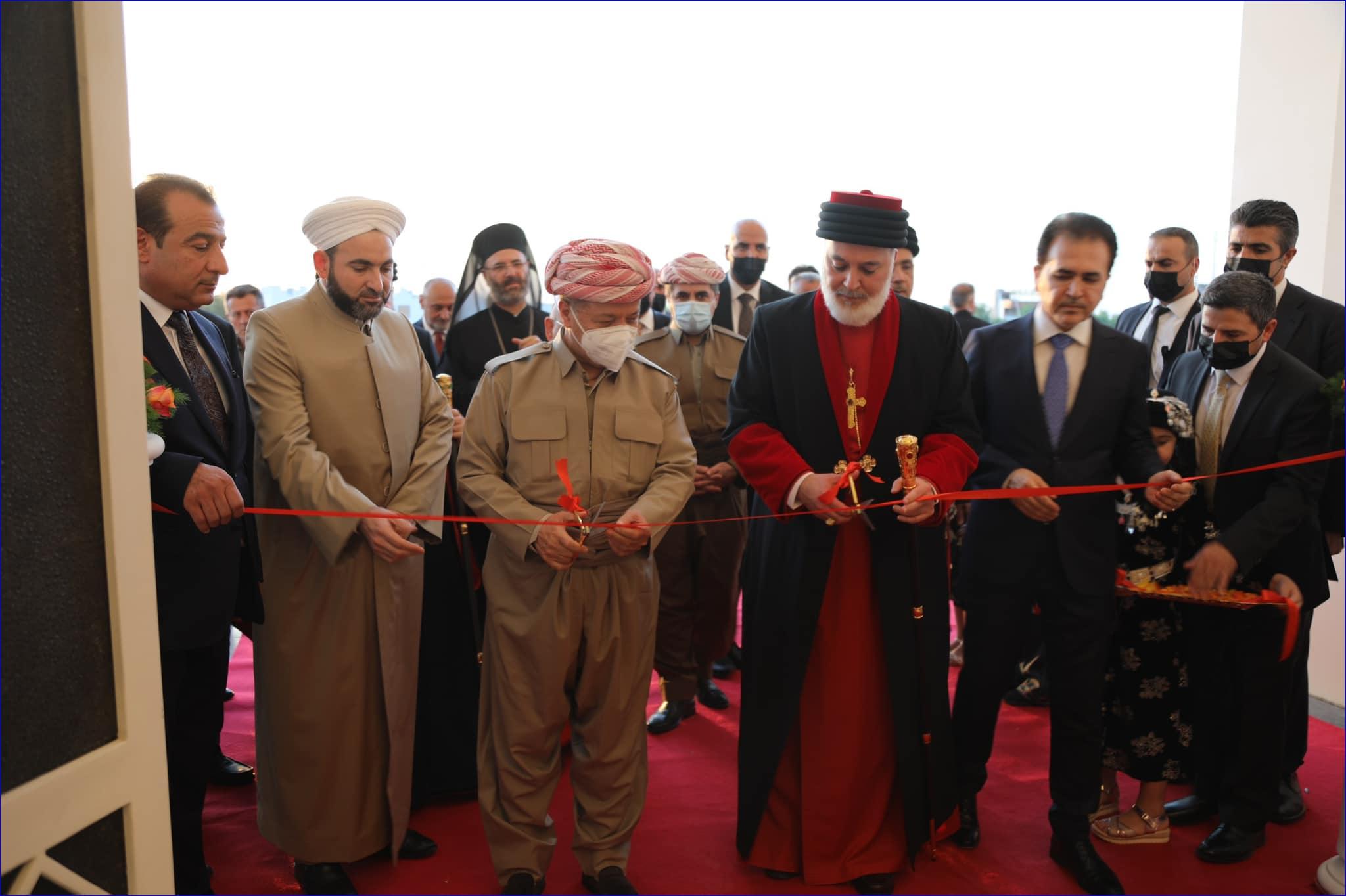
Patriarch Awa extended his gratitude to the former president of the Kurdistan Regional Government, Masoud Barzani, to former Prime Minister Nechirvan Barzani, and to Sarkis Aghajan, the former Minister for Finance and Economy and the one who was instrumental in obtaining the land for the patriarchate. The Patriarch also expressed appreciation to Fawzi Hariri, former Minister of Industry in Iraq, and to Pshtiwan Sadq Abdullah, the KRG Minister of Endowments and Religious Affairs. The Patriarch also expressed deep gratitude to Mr. Ninos Mimrud, who helped carry the project through.
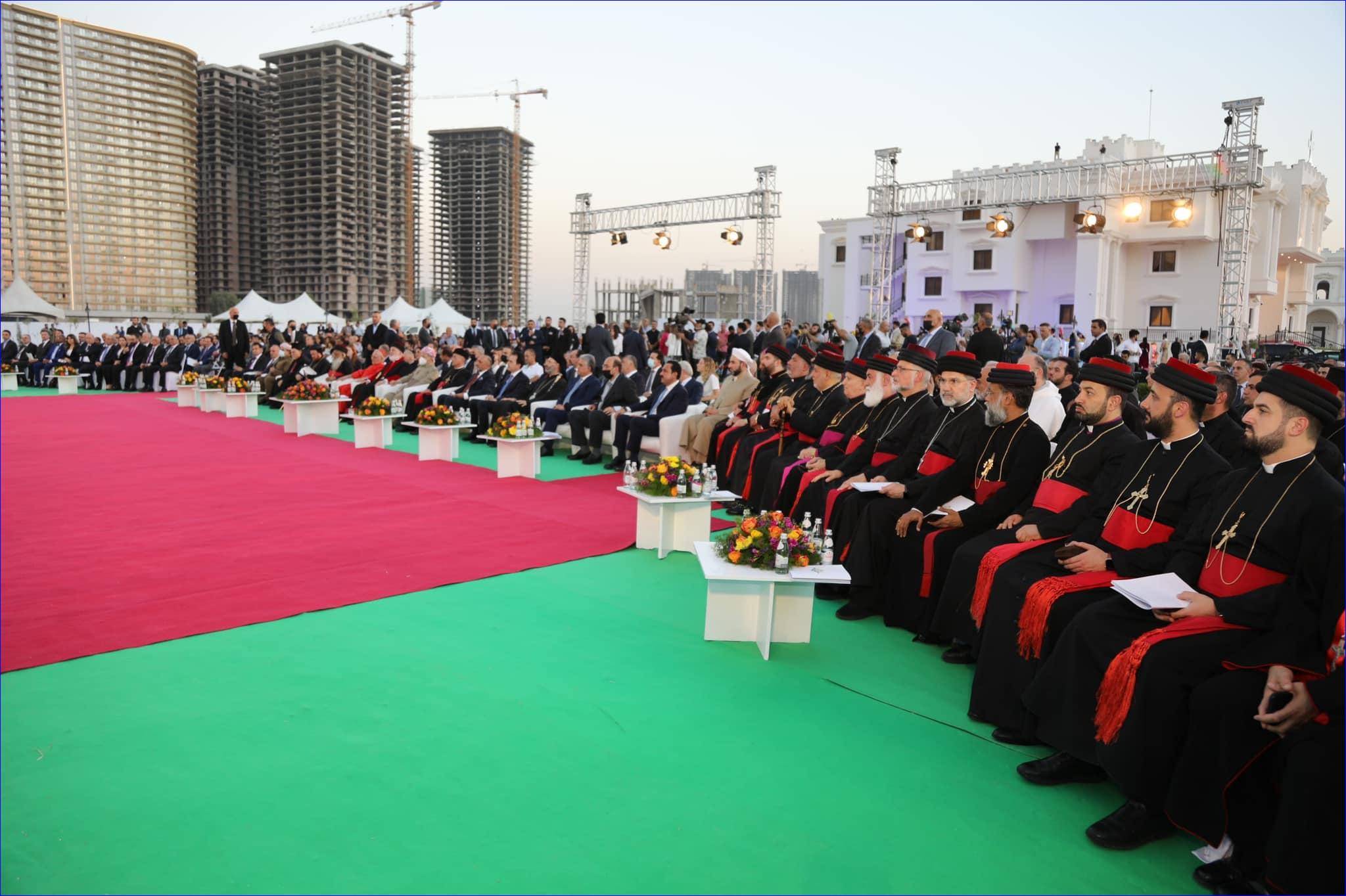
In a short speech, Masoud Barzani said the new patriarchate symbolized the 100-years-long relationship between Kurds and Assyrians initiated by Kurdish leader Abdulsalam Barzani and the martyred Patriarch Benyamin Shimun XIX.
During the ceremony, Mar Abris, the bishop of Erbil and Kirkuk, stopped his speech to express respect for the Islamic call to prayer at a nearby Mosque. The gesture won the approval of many Muslims in Iraq, who viewed it as a sign of mutual respect that Iraqis should have toward each other's religious beliefs and practices.
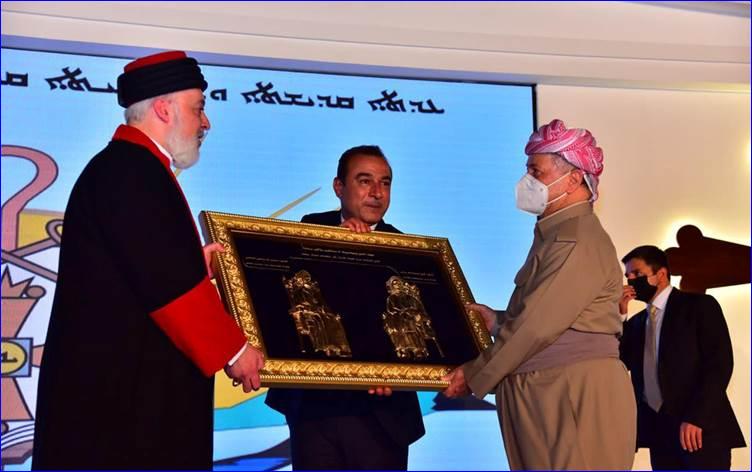
Some in the Assyrian community in the West expressed reservations about the close ties with the Kurdistan Regional Government, particularly given the news of land grabs in traditionally Assyrian villages in the Kurdistan region. Others, however, see the move as a much-needed positive change. "Wonderful!" one leader in Detroit said, "Hopefully Mar Awa will help bring the community back."
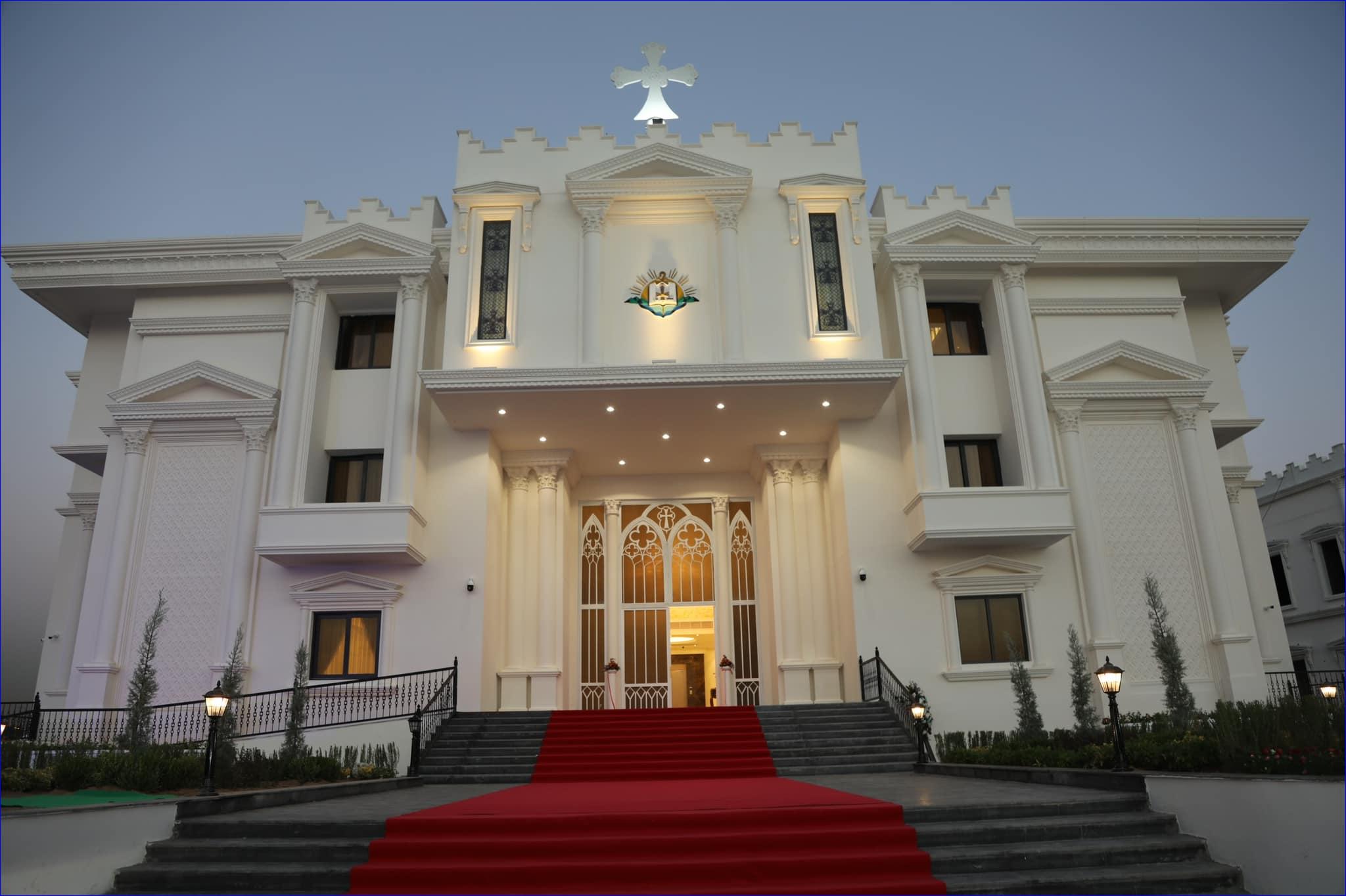
Perhaps the reestablishment of the patriarchate in Erbil, after its absence for hundreds of years, will bring back a community that has endured its virtual destruction over the past two decades. "I see this as a very hopeful sign," said an Assyrian activist in Chicago, "we have to cherish it and appreciate it."
1 Patricia Crone and Michael Cook; Hagarism: The Making of the Islamic World; Cambridge University Press. 1977, p. 57.
2 According to the classical historian and geographer Strabo, Seleucia-Ctesiphon took the place of Babylon, which he knew as "the metropolis of Assyria; but now Seleucia is the metropolis, I mean the Seleucia on the Tigris, as it is called. Nearby is situated a village called Ctesiphon, a large village." STRABO, GEOGRAPHY, p193 Book XVI, Chapter 1.

or register to post a comment.